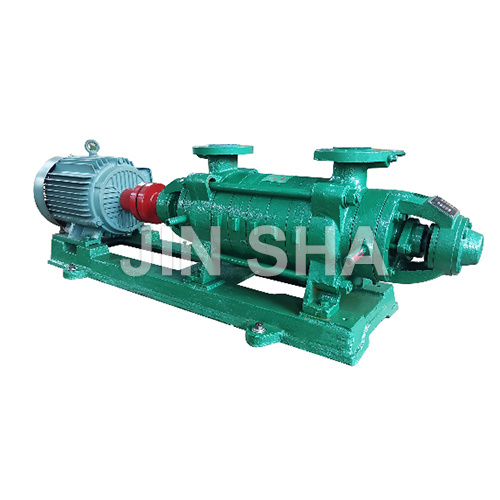NEWS CENTER
What are the adjustment methods of DG Multistage Pump
Time:
2022-12-01
DG Multistage Pump adopts the high-efficiency and energy-saving hydraulic model recommended by the country, which has the advantages of high efficiency and energy saving, wide range of performance, safe and stable operation, low noise, long life, and convenient installation and maintenance. By changing the pump material, sealing form and adding a cooling system, it can transport hot water, oil, corrosive and abrasive media, etc. Different multistage centrifugal pump manufacturers produce different DG Multistage Pump models. A multistage centrifugal pump is a combination of two or more pumps with the same function. In terms of fluid channel structure, it is manifested in the medium pressure relief port of the first stage and the second pump. The inlets of the first stage are connected, and the medium pressure relief port of the second stage is connected with the inlet of the third stage. Such a series connection mechanism forms a multistage centrifugal pump. The significance of the multistage centrifugal pump is to increase the set pressure.

1. Valve throttling
The simple way to change the flow rate of DG Multistage Pump is to adjust the opening of the outlet valve of the pump, while the speed of DG Multistage Pump remains unchanged (generally the rated speed). The essence is to change the position of the pipeline characteristic curve to change the operating point of the pump. The intersection point of the pump characteristic curve Q-H and the pipeline characteristic curve Q-∑h is the limit working condition point of the water pump when the valve is fully open. When the valve is closed, the local resistance of the pipeline increases, the operating point of the pump moves to the left, and the corresponding flow decreases. When the valve is fully closed, the resistance is infinite and the flow rate is zero. At this time, the pipeline characteristic curve coincides with the ordinate. It can be seen that when the flow is controlled by closing the small valve, the water supply capacity of the multistage centrifugal pump itself remains unchanged, the lift characteristic remains unchanged, and the pipe resistance characteristic will change with the valve opening. This method is easy to operate, the flow rate is continuous, and it can be adjusted freely between a certain large flow rate and zero without additional investment. It is applicable to a wide range of occasions. However, the throttling adjustment is to maintain a certain amount of supply by consuming the excess energy of the centrifugal pump, and the efficiency of the centrifugal pump will also decrease accordingly, which is not economically reasonable.
2. Frequency conversion speed regulation
It is the basic condition for the speed regulation of the pump that the operating point deviates from the high-efficiency zone. When the speed of the DG Multistage Pump changes, the valve opening remains unchanged (usually a large opening), the characteristics of the piping system remain unchanged, and the water supply capacity and head characteristics change accordingly. When the required flow rate is less than the rated flow rate, the head of frequency conversion speed regulation is smaller than valve throttling, so the water supply power required by frequency conversion speed regulation is also smaller than valve throttling. Obviously, compared with valve throttling, the energy-saving effect of frequency conversion speed regulation is very prominent, and the work efficiency of Horizontal Multistage Pump is higher. In addition, after adopting frequency conversion speed regulation, it not only helps to reduce the possibility of cavitation in centrifugal pumps, but also prolongs the start/stop process by presetting the speed up/down time, so that the dynamic torque is greatly reduced , thereby largely eliminating the destructive water hammer effect and greatly extending the life of the pump and piping system.
More News


